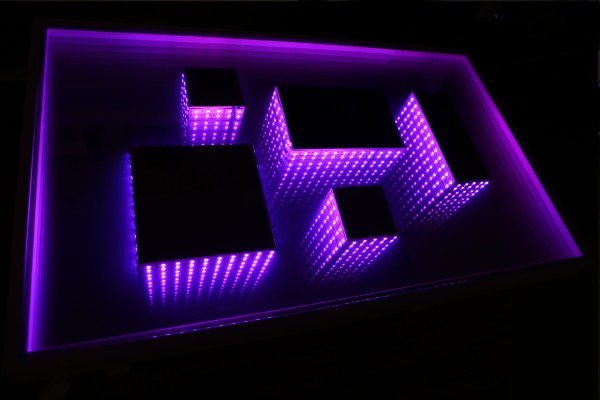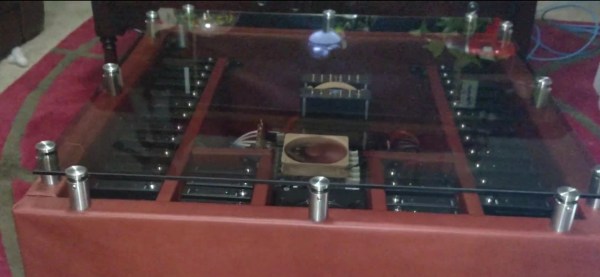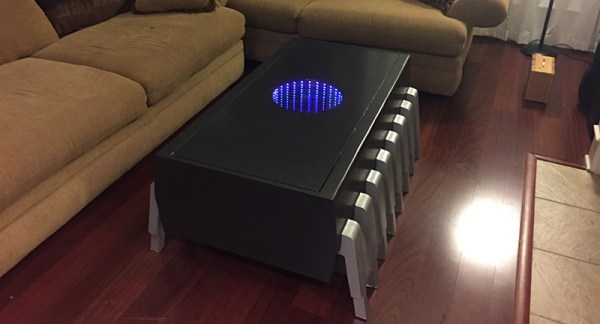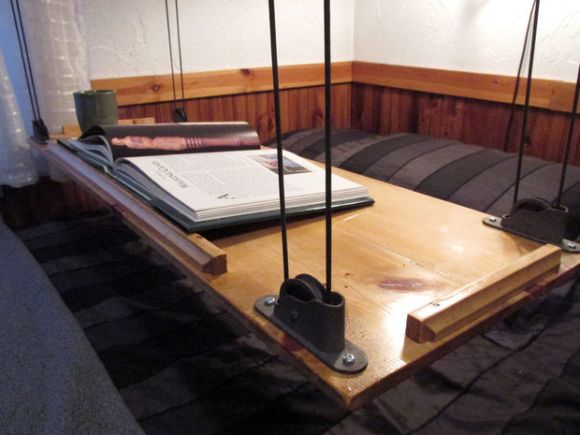Redditor [ squishy0eye] lacked a coffee table and wanted an infinity mirror. So, in a keen combination of the two, she built an infinity mirror table the resembles a nighttime cityscape.
Skimming over many of table’s build details, [squishy0eye] paused to inform the reader that an MDF base was used underneath the mirrors, with a hole drilled for the future power cable. For the top pane, she overlaid privacy screen mirror film onto tempered glass, turning it into a one-way mirror. The bottom pane is acrylic plastic due to the need to drill holes to hide the cables for each ‘building’ — the same mirror film was applied here as well. Wood was cut into rectangles for the building shapes and super glued around the holes and in the corresponding spots underneath to prevent any bowing in the acrylic. A small gap was left in each ‘building’ to run the 5050 non-waterproof LED strips around and back into the hole for power.

















